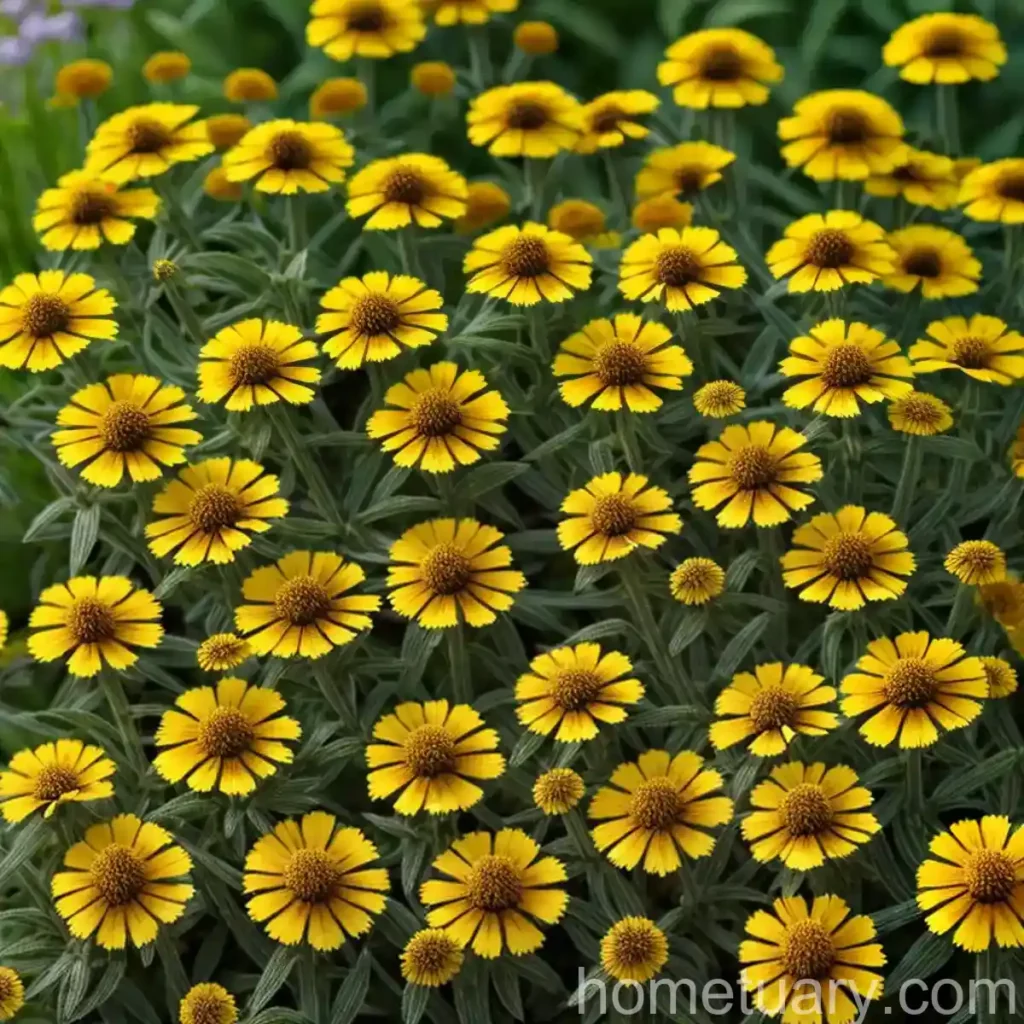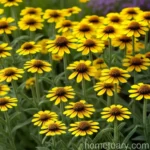Plant Name: Sneezeweed (Helenium ‘Rotgold’)
Introduction
Sneezeweed, scientifically known as Helenium ‘Rotgold’, is a charming and vibrant flowering plant that belongs to the Asteraceae family. Famed for its stunning, daisy-like blooms, Sneezeweed is a popular choice among gardeners and landscaping enthusiasts. This article will delve into the fascinating world of Sneezeweed, exploring its culture, uses, care requirements, and much more.
What is Sneezeweed?
Sneezeweed, despite its misleading name, is not a source of allergies nor does it provoke sneezing. It is an herbaceous perennial plant, native to North America, and is known for its lively and colorful appearance. This plant typically blooms in late summer to fall, treating the eyes to a spectacular display of warm and vibrant hues.
Key Takeaways
Sneezeweed (Helenium ‘Rotgold’)
- Scientific Name: Helenium ‘Rotgold’
- Family: Asteraceae
- Type: Herbaceous Perennial
- Lifespan: Long-lived
- Flower Color: Various shades of yellow, orange, and red
- Sunlight: Full sun to partial shade
- Watering: Moderate
- **Soil: ** Well-draining, fertile soil
- Hardiness Zones: 3-8
- Height: 2-5 feet
- Uses: Landscaping, Cut flowers
Now, let’s dive deeper into the various aspects of caring for and cultivating Sneezeweed.
Culture
Uses
Sneezeweed, with its vibrant and captivating blooms, serves several purposes in the garden and beyond:
- Landscaping: Its stunning flowers make it an excellent choice for adding color and vibrancy to garden beds, borders, and landscapes.
- Cut Flowers: The long, sturdy stems of Sneezeweed make it a fantastic cut flower, allowing its vibrant colors to brighten up indoor arrangements.
Water
Sneezeweed generally prefers consistently moist soil but can tolerate periods of drought once established. It is essential to water the plant regularly, especially during periods of extended dryness. However, care should be taken to avoid waterlogged conditions, as this can be detrimental to the plant’s health.
Sunlight
Sneezeweed thrives in full sun to partial shade. To ensure healthy growth and bountiful blooms, it is best to provide the plant with at least 6-8 hours of sunlight per day.
Fertilizer
Applying a balanced, all-purpose fertilizer in the early spring can promote healthy growth and abundant flowering. It is crucial to follow the recommended application rates to prevent over-fertilization, which can lead to excessive foliage growth at the expense of flowers.
Soil
The ideal soil for Sneezeweed is well-draining and fertile, with a slightly acidic to neutral pH. Amending the soil with organic matter such as compost can enhance its fertility and improve drainage, creating an optimal growing environment for the plant.
Pruning
Pruning can help maintain the shape and vigor of Sneezeweed. Deadheading, or the removal of spent flowers, can encourage the plant to produce more blooms. Additionally, pruning the plant in late spring or early summer can promote bushier growth and prevent it from becoming too leggy.
Propagation
Sneezeweed can be propagated through division or from seeds. Dividing established clumps in the early spring can help rejuvenate the plant and create new specimens for the garden. Similarly, collecting and sowing seeds in the fall can yield new plants for the following growing season.
Container Popularity
While Sneezeweed is often grown in garden beds and borders, it also thrives in containers. This versatility makes it a popular choice for container gardening, allowing space-challenged gardeners to enjoy its stunning blooms on patios, balconies, and other outdoor spaces.
Common Diseases
Sneezeweed, like many plants, is susceptible to certain diseases that can impact its health and vitality. Some common diseases that may affect Sneezeweed include:
- Powdery Mildew: A fungal disease that appears as a powdery, white substance on the plant’s leaves, leading to stunted growth and reduced flowering.
- Botrytis Blight: Another fungal disease that causes browning and decay of flowers and foliage, particularly in humid conditions.
- Root Rot: Excessive soil moisture can lead to root rot, causing the plant to wilt, yellow, and eventually die.
Disease Diagnosis
Diagnosing and addressing diseases promptly is crucial in preventing their spread and minimizing their impact on Sneezeweed. Regularly inspecting the plant for signs of discoloration, spotted leaves, or unusual growth can help identify and address disease issues at an early stage.
Common Pests
While Sneezeweed is relatively resistant to pests, it may occasionally encounter a few unwelcome visitors. Some common pests that may affect Sneezeweed include:
- Aphids: These small, soft-bodied insects feed on the plant’s sap and can cause distortion and discoloration of the leaves.
- Spider Mites: These tiny, sap-sucking pests can cause stippling and webbing on the leaves, leading to reduced vigor and growth.
- Thrips: Thrips can cause stippling and deformed growth, affecting the overall appearance of Sneezeweed.
Vigilant monitoring and prompt action, such as using insecticidal soap or neem oil, can help manage and control pest populations effectively.
Botanist’s Tips
- Companion Planting: Pairing Sneezeweed with companion plants such as coneflowers, black-eyed Susans, and ornamental grasses can create visually stunning and harmonious plant combinations in the garden.
- Drought Tolerance: While Sneezeweed prefers moist soil, it exhibits good drought tolerance once established, making it suitable for water-wise landscapes and gardens.
- Attracting Pollinators: The vibrant blooms of Sneezeweed attract a variety of pollinators, including bees, butterflies, and other beneficial insects, contributing to a thriving and biodiverse garden ecosystem.
Fun Facts
- The common name “Sneezeweed” is derived from the historical use of its dried leaves in making snuff, although the plant does not induce sneezing.
- Sneezeweed’s vibrant flowers are not only visually striking but also serve as a valuable nectar source for pollinators, supporting the ecological balance of the garden.
Links to External Resources
For further information on caring for Sneezeweed and incorporating it into your garden, consider exploring the following resources:















